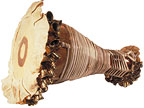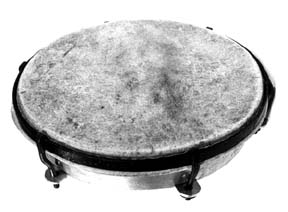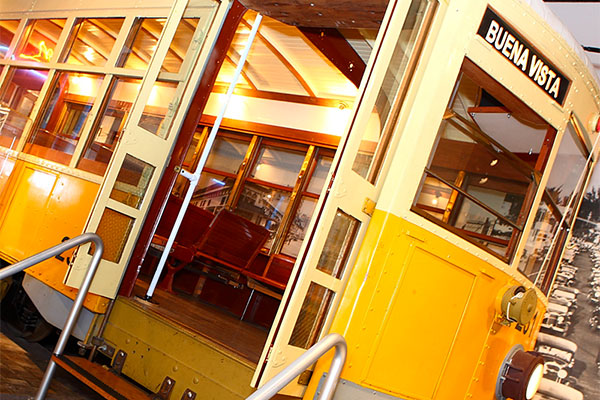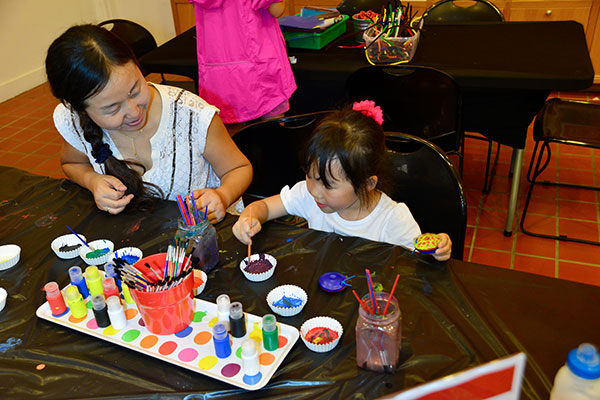Over the past four decades, Miami has been transformed from a predominantly tourist-oriented southern city into an international metropolis in which well over one third of the population is of Caribbean descent. One expression of this transformation is the proliferation of nightclubs and radio stations that feature Caribbean popular music styles, such as salsa, merengue, reggae, soca and konpa. But Miami’s Caribbean musical heritage extends far beyond the well-known artistes who perform and record in these popular styles. In more secluded settings and at special festive occasions in Caribbean neighborhoods, one can hear the sounds of an immense variety of drums and other percussion instruments. Percussion instruments generate fundamental rhythms for Miami’s Caribbean communities: rhythms for moving, communicating and experiencing the world. Their sounds constitute complex musical languages which, though often immediately appealing to outsiders, require years to fully learn and understand. In many cases, these musical languages are interrelated with systems of religious or philosophical knowledge. So, apprentice percussionists must acquire from masters both musical skills and bodies of wisdom that have been perpetuated for generations. Though only a small number of individuals become accomplished percussionists, percussion traditions carry cultural significance for many people and are of value to anyone who wishes to obtain a deeper understanding of Caribbean history and artistic achievements.

Cuban Orisha And Secular Percussion
Orisha worship is the traditional religion of the Yoruba people of West Africa. Yorubas brought their religion to Cuba, and it has since spread to Miami and other cities in the United States. Percussion is a crucial component of the religion, in that it is the vehicle through which devotees communicate with the orishas (deities). For the most important religious ceremonies, an ensemble of three double-headed batá drums is employed and frequently augmented by an acheré (a small gourd rattle). Batá drums are ritually consecrated and are particularly pleasing to the orishas. In ceremonies where there is a less rigorous protocol, other instruments can be used, such as shekerés (large gourd rattles that are strung with beads or seeds), conga drums and a guataca (a hoe blade or cowbell played with a striker). Orisha percussion generally accompanies singing in which deities are praised and invited to descend upon their devotees. Though most Orisha percussionists play mainly for religious ceremonies, some occasionally appear in nightclub shows, museum programs or similar settings. Orisha percussionists believe that, when they perform in secular contexts, they help audiences gain a new perspective on a religion that is often misunderstood.
A major genre of Afro-Cuban secular music and dance is rumba, of which there are three main forms: the guaguancó and yambú (couple dances) and the colombia (a solo male dance). The standard rumba ensemble consists of three conga drums, claves (two wooden sticks struck together) and a guagua (a piece of bamboo struck with two sticks). Cajones (wooden boxes) are typically substituted for congas when playing the yambú. All three forms of rumba feature a lead singer and a chorus. In Miami, rumbas are played in both home descargas (jam sessions) and in choreographed shows.

Puerto Rican Secular Percussion
Two of the best-known forms of music from Puerto Rico are bomba and plena. The African-derived bomba features highly expressive dancing and singing, traditionally accompanied by two barrel-shaped bomba drums, a cuá (any hard surface that is struck with a pair of sticks) and maracas (gourd rattles). Plena songs, valued for their commentary on Puerto Rican life, are typically performed by an ensemble that includes three or more panderos (small frame drums), a cuá, a güiro (gourd scraper), and one or more non-percussive instruments, such as a sinfonia (harmonica) or guitar. In Miami bombas and plenas are played and sung at birthday parties, Christmas celebrations and other community gatherings. They are also presented by ensembles in choreographed shows.
Haitian Percussion

At the heart of Haitian percussion in Miami are the rich African-derived religious and artistic traditions of Vodou. In Vodou ceremonies, drums and other percussion instruments enable devotees to establish contact with the lwa (deities). The lwa are divided into several nations, the two main groupings of which are Rada and Petwo. This basic division is reflected in drum ensembles. The three drums of the Rada ensemble have cowhide covers that are attached with wooden pegs, while the two or three drums of the Petwo ensemble have goatskin covers attached with cords. Petwo drums have a sharper sound, which reflects the aggressive temperament of their lwa. Other Vodou instruments are the ogan (a piece of iron played with a metal striker), the tcha-tcha (a small rattle), the ason (a calabash that is covered with a mesh of beads) and Cuban congas. In Miami Vodou percussion is used not only in ceremonies but in the staged presentations of misik rasin (roots music) bands and folkloric troupes. By drawing on folk music and other traditional arts, these groups create performances that celebrate Haitian culture and comment on the political experiences of the Haitian people.

Trinidadian Steel Pan Music
The instruments that North Americans usually refer to as “steel drums” are called “pans” in Trinidad, the country in which they were invented. The making of pans is a complex process in which a craftsman first pounds the bottom of an oil or chemical drum into a concave shape. On this surface individual sections are then grooved to form distinct notes. There are several types of pans, each with a specific range of notes, in a standard steelband. The tenor or lead pan is fashioned from a single container, the surface of which is divided into approximately 30 notes; while a bass is often made from six full-size containers, each with three notes. In between are other pans, such as the double seconds, guitars, cellos and tenor basses. Steelbands also include a drum set, pieces of iron played with metal strikers and other percussion instruments. In Miami steelbands based in the Trinidadian community play calypsos and other types of music at the West Indian Carnival on Columbus Day weekend and at various other festive occasions. Meanwhile, individual pan players often find work in South Florida’s tourist and private party markets. For these performances, one or two pans are typically combined with non-percussive instruments, such as an electric guitar, bass or keyboard.

Indo-Caribbean Percussion
At the religious and social events of Trinidadians and Guyanese of East Indian descent in South Florida, the double-headed dholak drum is one of the most popular musical instruments. The dholak is generally played in an ensemble that also includes a harmonium (a small hand-pumped organ) and a dhantal (a metal rod played with a striker). Other percussion instruments, such as the mangeera and the jhal (different sized pairs of cymbals), are frequently played as well. Dholak-based ensembles accompany group or solo singing at Hindu religious services, weddings and festivals, such as Divali and Phagwa. Among the musical genres performed are bhajans (hymns) and “classical” songs that are distinctively Caribbean. Another type of Indo-Caribbean percussion is the tassa ensemble, which includes conical tassa drums, a double-headed bass drum and a jhanj (a large pair of cymbals). Tassa drums are made by stretching goatskin covers over clay shells. Before being played, they must be heated to tighten their skins and raise their tone to an optimal pitch. In South Florida, various tassa “hands” or rhythms are performed for wedding processionals, parties and Hindu festivals.

Bahamian Junkanoo Music
Junkanoo music is associated with street parades in the Bahamas on Boxing Day (December 26) and New Year’s Day. At the foundation of the music are goombay drums, which are made by attaching goatskins to metal containers. Before a performance, these drums must be heated to tighten their skins and heighten their tones. Other key instruments in Junkanoo groups are tom-toms (tenor drums from trap sets) and cowbells, which are played in pairs (one or more in each hand). Drummers and “bellers” also blow whistles, while other group members play wind instruments, such as “foghorns.” Though Miami’s Junkanoo groups periodically perform at various functions outside the Bahamian community, two of their annual highlights are the Goombay Festival, which is held each June in the old Bahamian section of Coconut Grove, and the Martin Luther King Day parade in West Perrine. The fact that the major Junkanoo events in the Miami area and the Bahamas occur on different dates enables many musicians from both sides of the Florida Straits to travel back and forth for performances. As is the case with other Caribbean percussionists in Miami, local Junkanoo musicians remain closely linked to the traditions of their home country.



